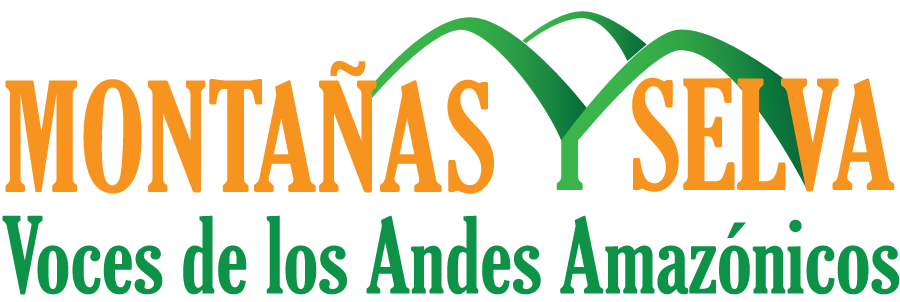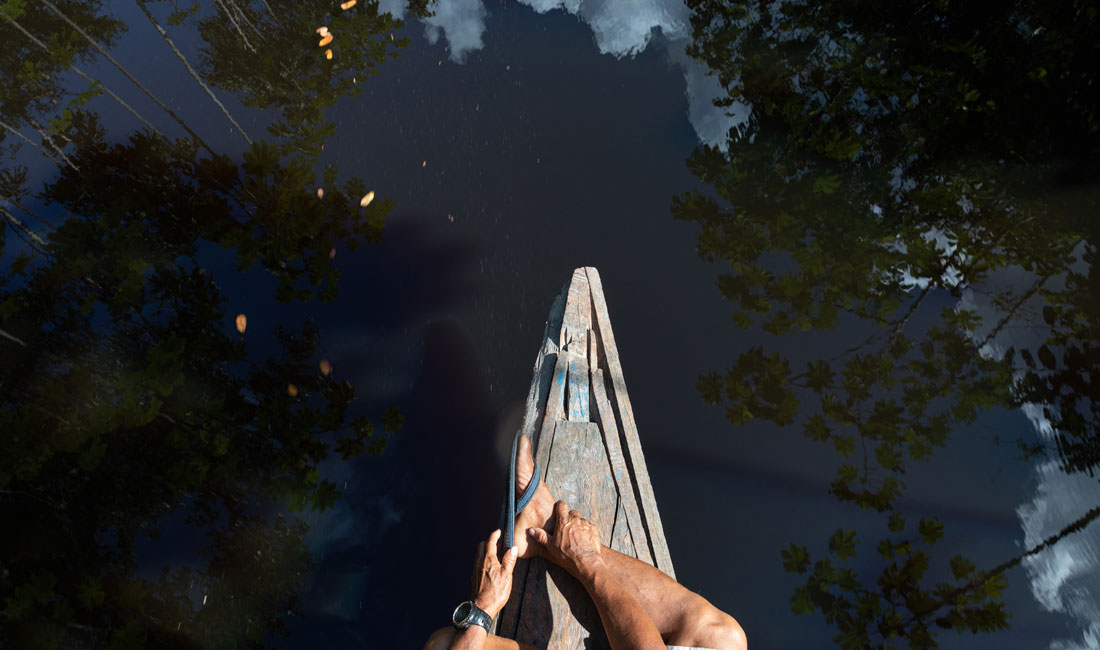
Dark, still water reflects treetops and clouds as a canoe glides along the canal containing a pipeline that crosses the Urarina community of Nueva Unión, on Peru’s Chambira River. Photo: Ginebra Peña
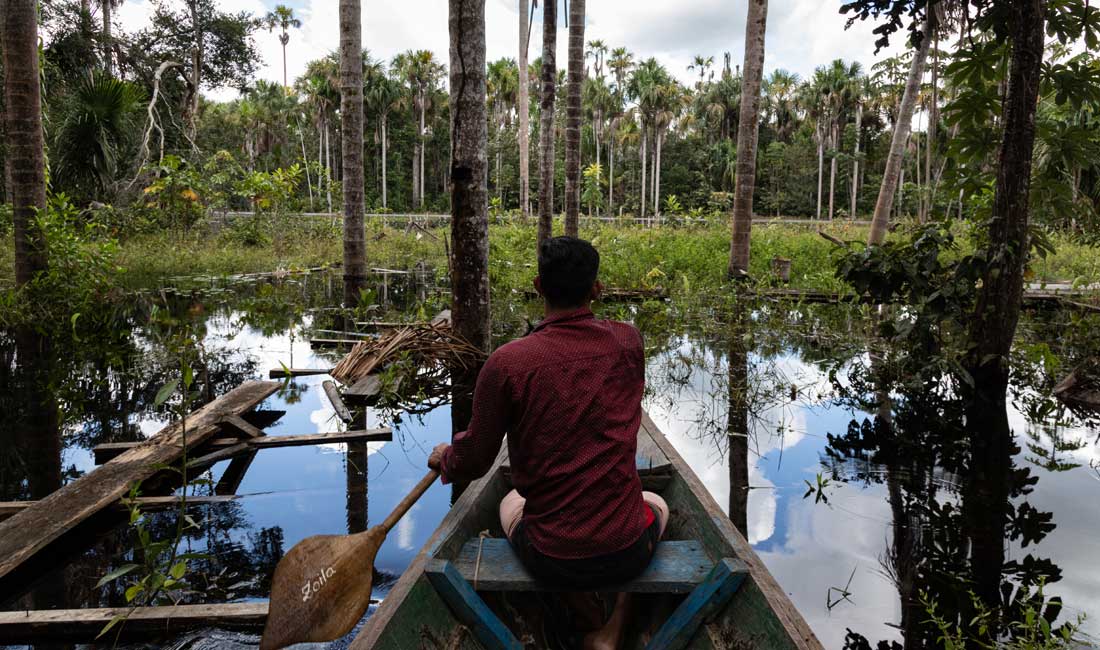
A canoe approaches a lake where oil spilled from a pipeline near the community of Nuevo Progreso, on Peru’s Chambira River. Oil remains in the peat of a palm swamp neighboring the lake. Photo: Ginebra Peña
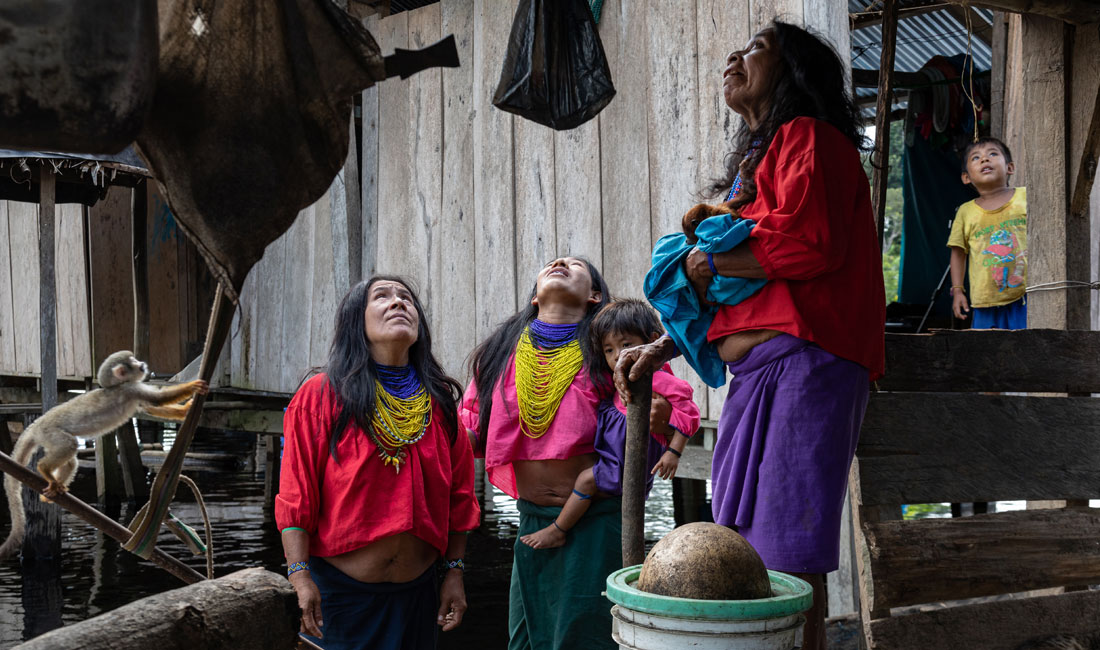
When Leonardo Tello of Radio Ucamara launches a drone to get an aerial view of the Urarina community of Nuevo Perú, everyone in the kitchen stops to watch. Photo: Ginebra Peña
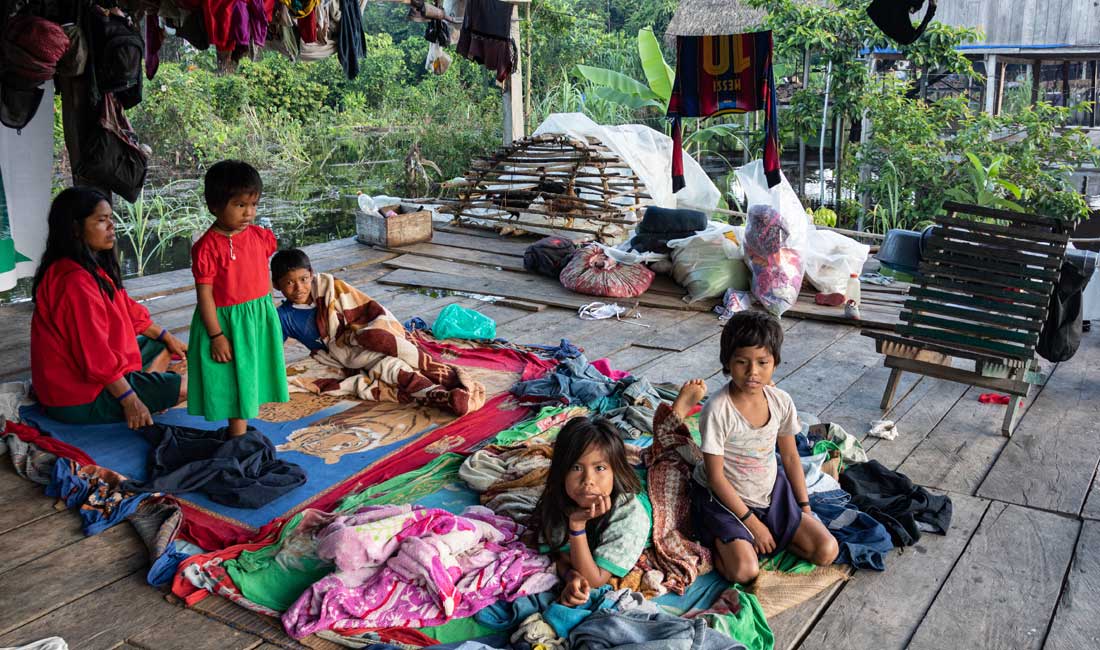
A family starts the day in the Urarina Indigenous community of Nueva Unión on the Chambira River in Peru’s northeastern Loreto region. Photo: Ginebra Peña
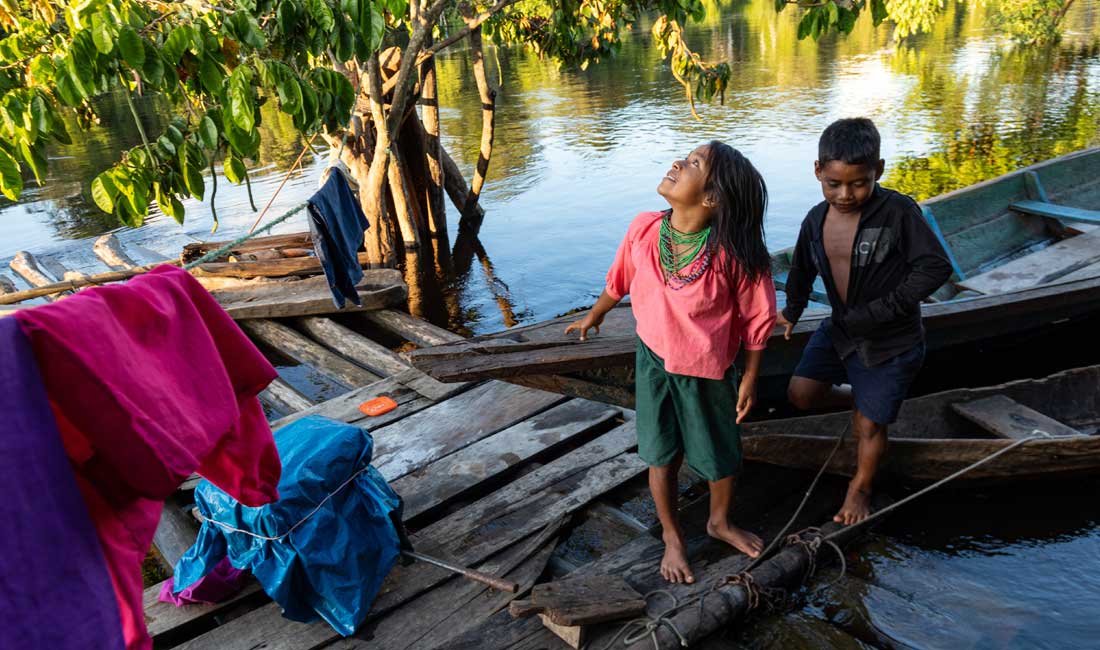
An Urarina girl in the community of Nueva Unión is captivated by a drone flying overhead. Photo: Ginebra Peña
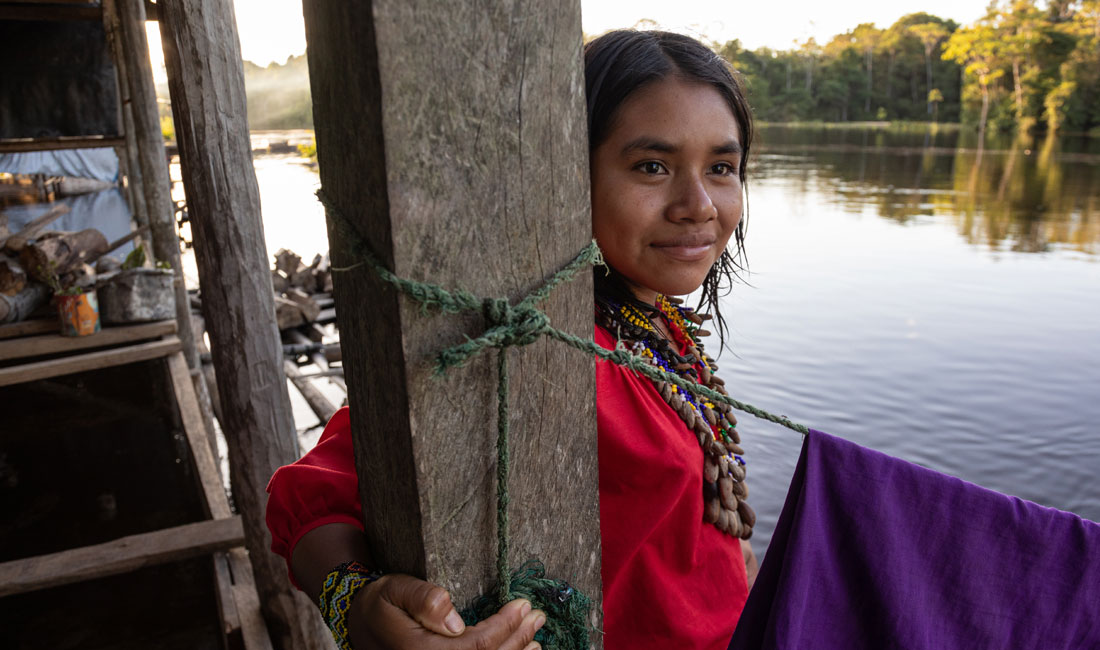
A young Urarina woman looks out over the Chambira River in Peru’s Loreto region. Photo: Ginebra Peña

Women in the community of Nuevo Progreso wash clothes in water drawn from the Chambira River. Photo: Ginebra Peña

A girl stands in the kitchen of a house in the Urarina Indigenous community of Nuevo Peru, on the Chambira River in Peru’s northeastern Loreto region. Photo: Ginebra Peña
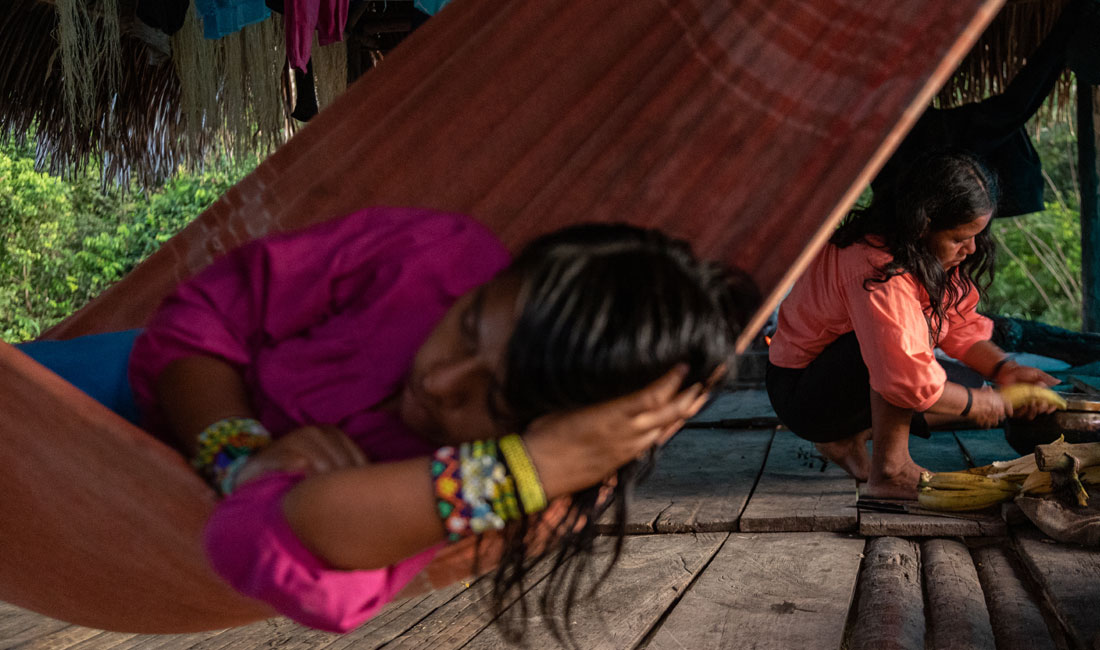
A young Urarina woman relaxes in a hammock as another selects firewood from a small pile in a house on Peru’s Chambira River. Photo: Ginebra Peña
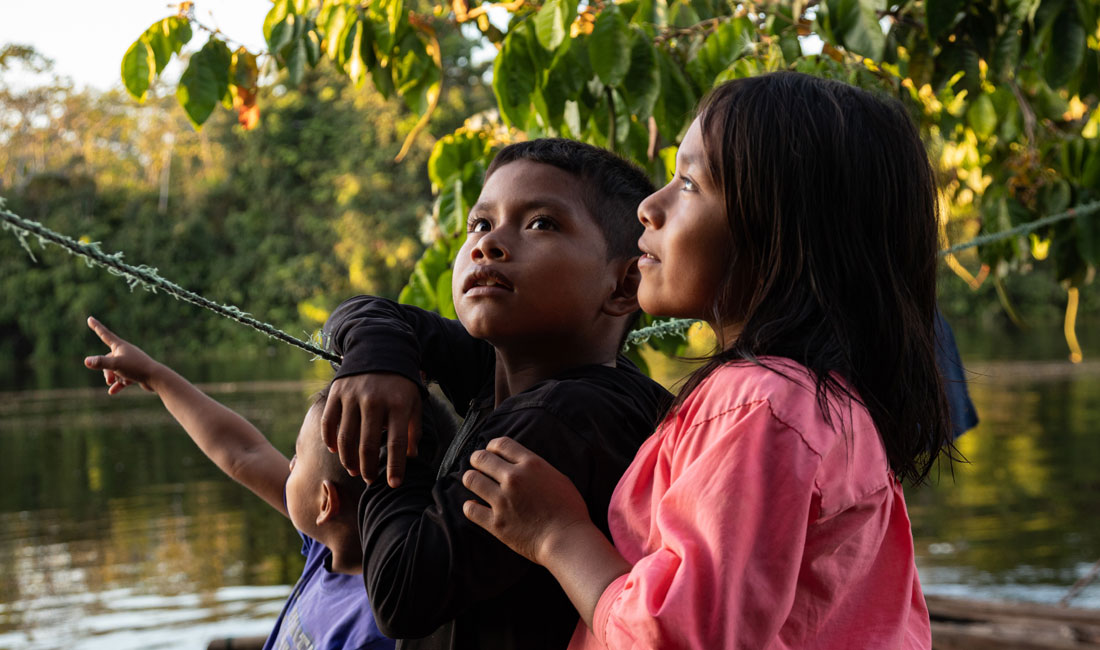
Children in the Urarina community of Nueva Unión, on Peru’s Chambira River, watch as a drone flies overhead filming the place where a pipeline crosses their community. Photo: Ginebra Peña
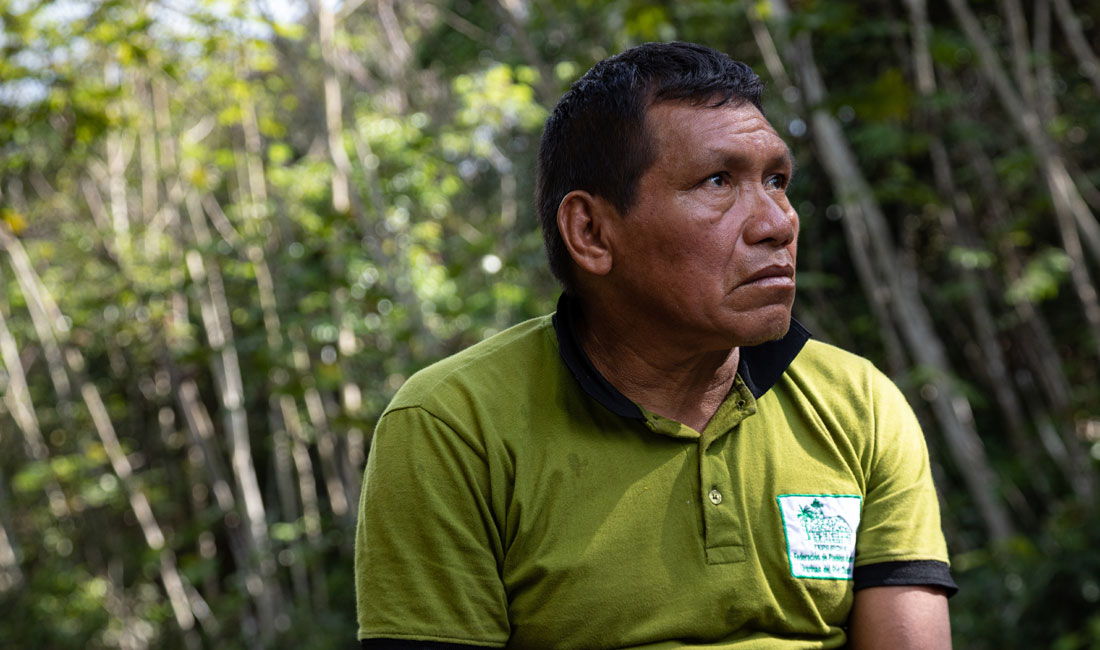
Vicente Arahuata Manizari, health promoter in the Urarina community of Nueva Unión, on Peru’s Chambira River. Photo: Ginebra Peña
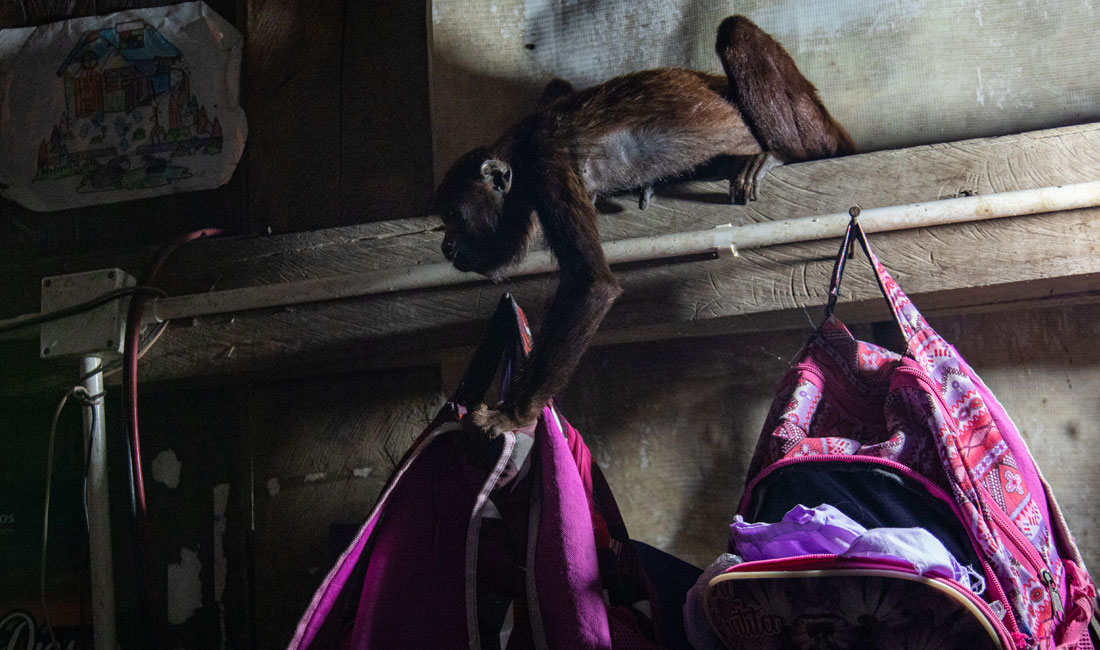
In the dim light of a solar-powered bulb, a monkey explores a daypack hanging on a peg in a house in the Urarina community of Nueva Unión, Peru. Photo: Ginebra Peña
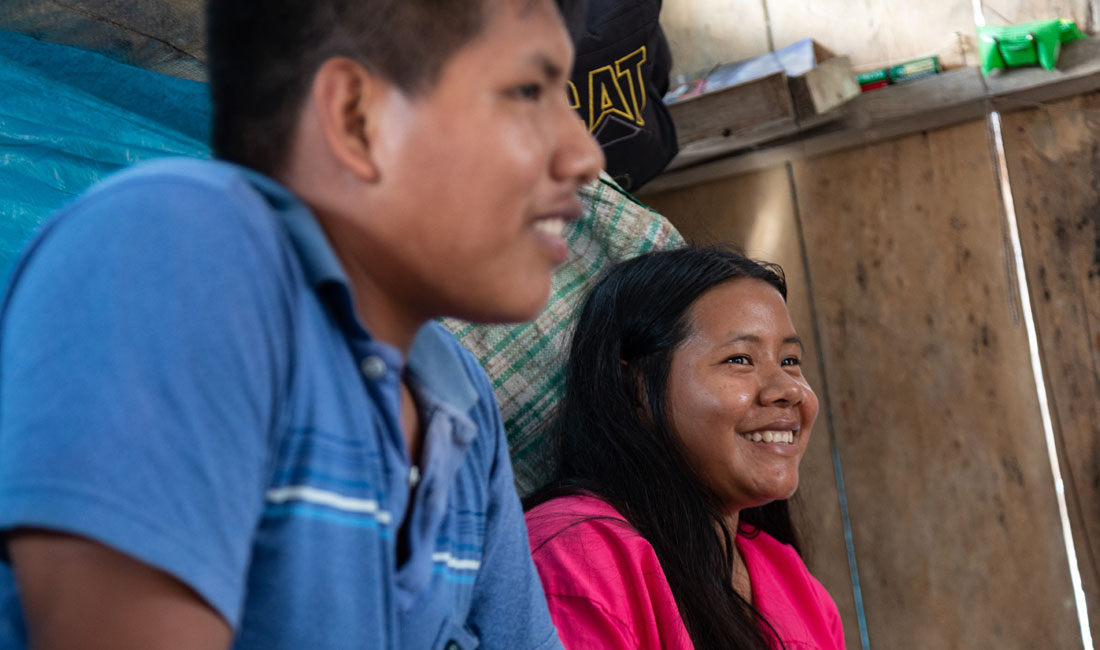
Jonatan Inuma Arahuata and Paquita López Rojas launched the first regular radio program in the Urarina language at Radio Ucamara in Nauta, Peru. Photo: Ginebra Peña
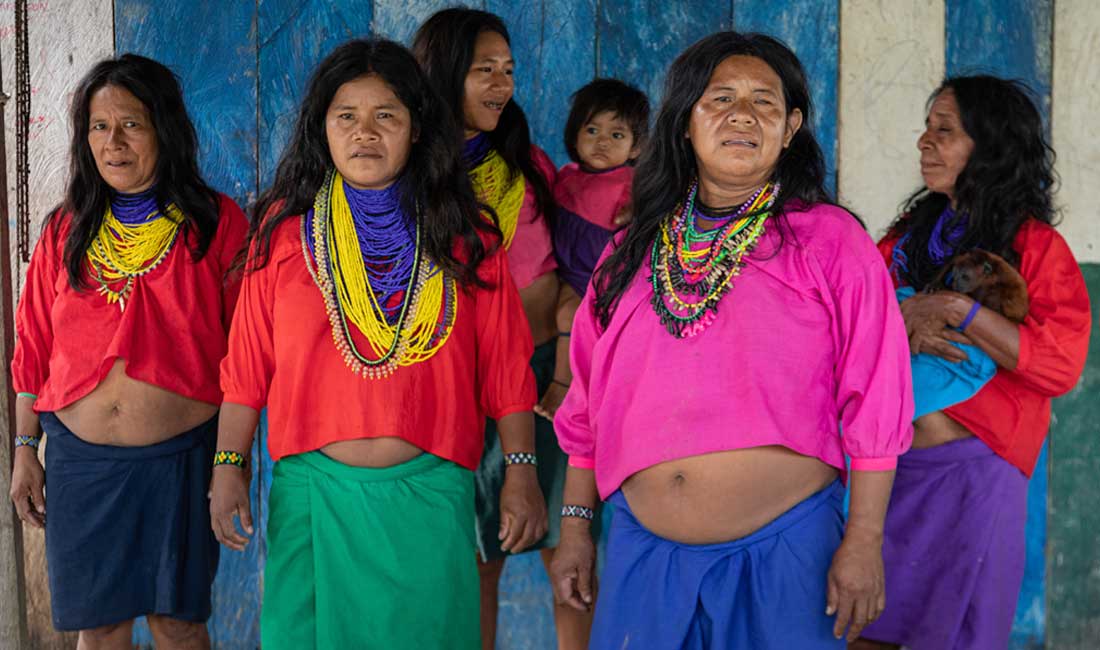
Women in the Urarina community of Nuevo Perú watch as a drone lands after flying over their village. Urarina women in villages along the Chambira River maintain many traditions, including their style of dress and weaving. Photo: Ginebra Peña
